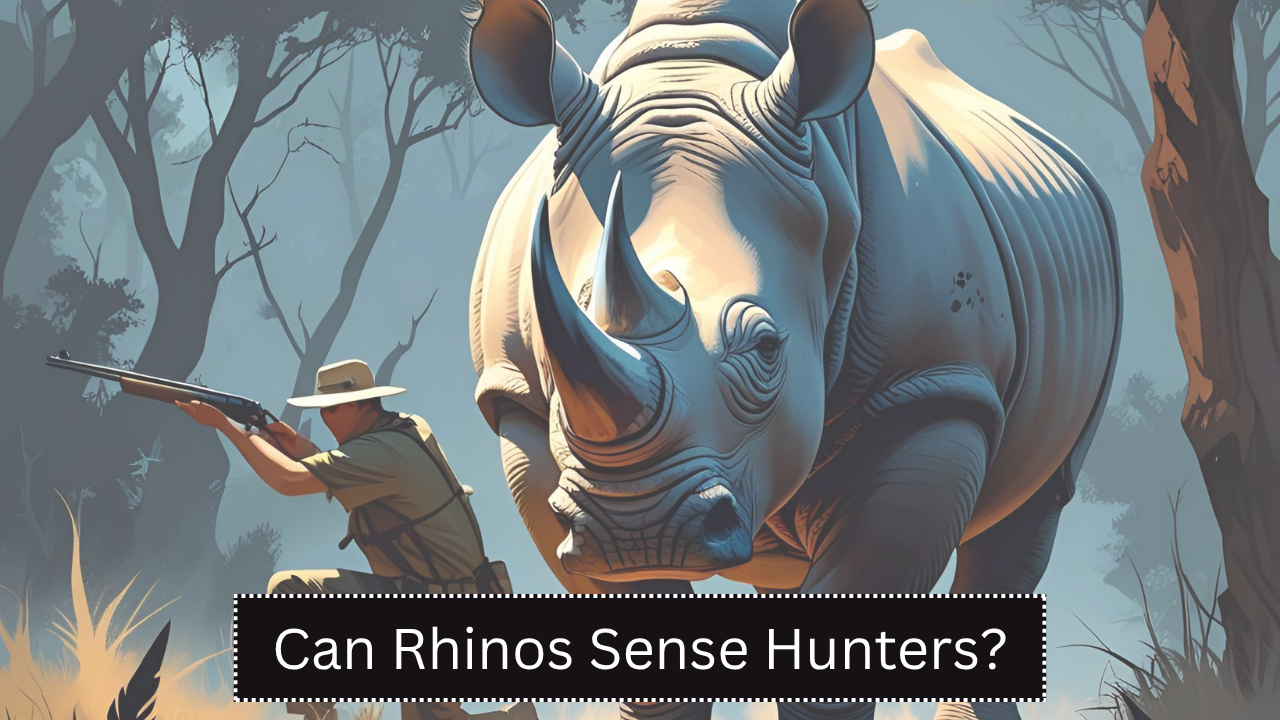Rhinos, as ancient herbivores, inhabit diverse terrains ranging from African savannas to dense Asian forests. Their massive size and physical strength might suggest invincibility, yet these creatures remain under constant threat from poaching. A growing body of behavioral science indicates that rhinos might not be as defenseless as once thought. Evidence from wildlife studies suggests that rhinos exhibit unique behavioral responses when in proximity to hunters, which raises an intriguing question: can rhinos sense hunters? Understanding this dynamic requires examining sensory perception, evolutionary instincts, and real-world wildlife observations.
Sensory Capabilities of Rhinos
Rhinos rely on specific senses to interact with their environment and detect potential threats.
- Poor Vision
- Rhinos have relatively weak eyesight.
- Movement detection is possible up to 30 meters, but details beyond that remain blurry.
- Dependence on other senses compensates for this limitation.
- Excellent Hearing
- Cup-shaped ears rotate independently to capture sounds from different directions.
- Low-frequency sounds, such as footsteps or hushed conversations, are easily detectable.
- Hearing plays a vital role in early threat detection.
- Keen Sense of Smell
- Olfactory capabilities are exceptionally developed.
- Scent markings help rhinos establish territories and identify unfamiliar presences.
- Smell is a primary tool for detecting intruders, including humans.
Instinctive Reactions to Threats
Rhinos, through millennia of evolution, have developed instinctual responses to potential danger.
- Fight or Flight Response
- White rhinos are more likely to flee.
- Black rhinos often charge unpredictably when startled.
- Responses vary based on species, habitat, and threat proximity.
- Heightened Alertness
- Unfamiliar sounds or scents trigger defensive behavior.
- Rhinos may stand still, sniff the air, and raise their heads.
- Sudden changes in routine behavior suggest the detection of a threat.
- Nocturnal Behavior Shift
- In poaching hotspots, rhinos become more active at night.
- Avoidance of daylight hours helps reduce encounters with hunters.
- Shift indicates adaptability based on external pressure.
Evidence from the Field
Scientific research and ranger observations offer compelling examples of rhino behavior in response to human threats.
| Observation Type | Details |
|---|---|
| Drone Surveillance Reports | Rhinos often move away from areas where poachers have recently operated. |
| GPS Tracking | Collared rhinos change migration routes in reaction to human movement patterns. |
| Anti-Poaching Patrol Data | Behavioral shifts are often reported near poaching-prone areas. |
| Acoustic Studies | Playback of human voices or machinery causes rhinos to leave grazing zones. |
Behavioral Indicators of Hunter Sensing
Rhinos may not “sense” hunters in a conscious way, but their natural abilities allow them to detect unusual presence.
- Increased Sniffing and Ear Movement
- Indicates sensory focus on unknown elements.
- Rhinos often pause and analyze scents before deciding to flee or investigate.
- Avoidance Patterns
- Rhinos consistently avoid trails previously used by poachers.
- Behavioral memory plays a role in location-based threat recognition.
- Aggression or Retreat
- Depending on prior experience with humans, rhinos may charge or disappear.
- Aggressive rhinos often had prior negative encounters, such as being darted or chased.
Hunter Detection vs. General Human Awareness
Understanding the distinction between a rhino sensing a hunter and a rhino sensing any human is key.
| Aspect | Hunter Detection | General Human Awareness |
|---|---|---|
| Scent Recognition | Rhinos distinguish between natural and artificial human scents. | Basic human scent may not cause alarm unless associated with danger. |
| Behavioral Response | Skittish or aggressive responses are common. | Curiosity or neutral behavior is more likely. |
| Experience-Driven | Prior poaching attempts heighten threat response. | Park rangers or researchers rarely trigger aggressive behavior. |
| Equipment Sensitivity | Sounds of guns, boots, or ATVs create immediate alert. | Non-threatening tools like cameras don’t elicit strong reactions. |
Adaptation to Human Threats Over Time
Rhinos are not only reacting but also adapting to changing patterns of human behavior.
- Territorial Shifts
- Some rhinos migrate to less disturbed habitats.
- Data shows increased rhino movement toward conservation zones.
- Avoidance of Trails and Roads
- Poaching often occurs near accessible routes.
- Rhinos have been recorded bypassing these areas entirely.
- Changing Group Behavior
- Female rhinos with calves become more protective and secretive.
- Solitary males may change territory more frequently to avoid confrontation.
Role of Behavioral Science in Conservation
Behavioral research is reshaping rhino conservation strategies.
- Anti-Poaching Techniques
- Understanding rhino reactions helps design more effective deterrents.
- Patrol routes and times are optimized based on rhino behavioral data.
- Technology Integration
- AI systems analyze patterns in rhino movements and flag unusual activity.
- Real-time GPS data helps locate rhinos in danger zones.
- Community Involvement
- Educating local populations about rhino behavior improves conservation partnerships.
- Reducing human-rhino conflict is key to long-term success.
Comparison of Rhino Senses and Threat Detection
| Sense | Strength Level | Usage in Detecting Hunters |
|---|---|---|
| Sight | Weak | Limited to movement detection; not reliable in detail. |
| Hearing | Strong | Picks up low-frequency human movement and conversation. |
| Smell | Extremely Strong | Detects scents from significant distances; key to alert. |
Key Insights from Field Experts
- Conservation biologists emphasize that rhinos are not entirely passive targets.
- Wildlife trackers note that rhinos often leave high-risk areas before patrols arrive.
- Veterinarians report changes in stress levels in rhinos near poaching zones.
- Ecologists observe herd-wide behavior shifts after a single poaching incident.
Final Thoughts
Rhinos demonstrate complex and adaptive behaviors when faced with human threats, particularly poachers. While not clairvoyant, these animals possess sharp sensory tools and deep-rooted instincts that allow them to detect and often avoid danger. Behavioral science continues to uncover how rhinos modify their actions based on experience, scent, sound, and environmental cues. A deeper understanding of these responses is not only fascinating—it is essential for developing effective strategies to protect one of the planet’s most endangered giants.

